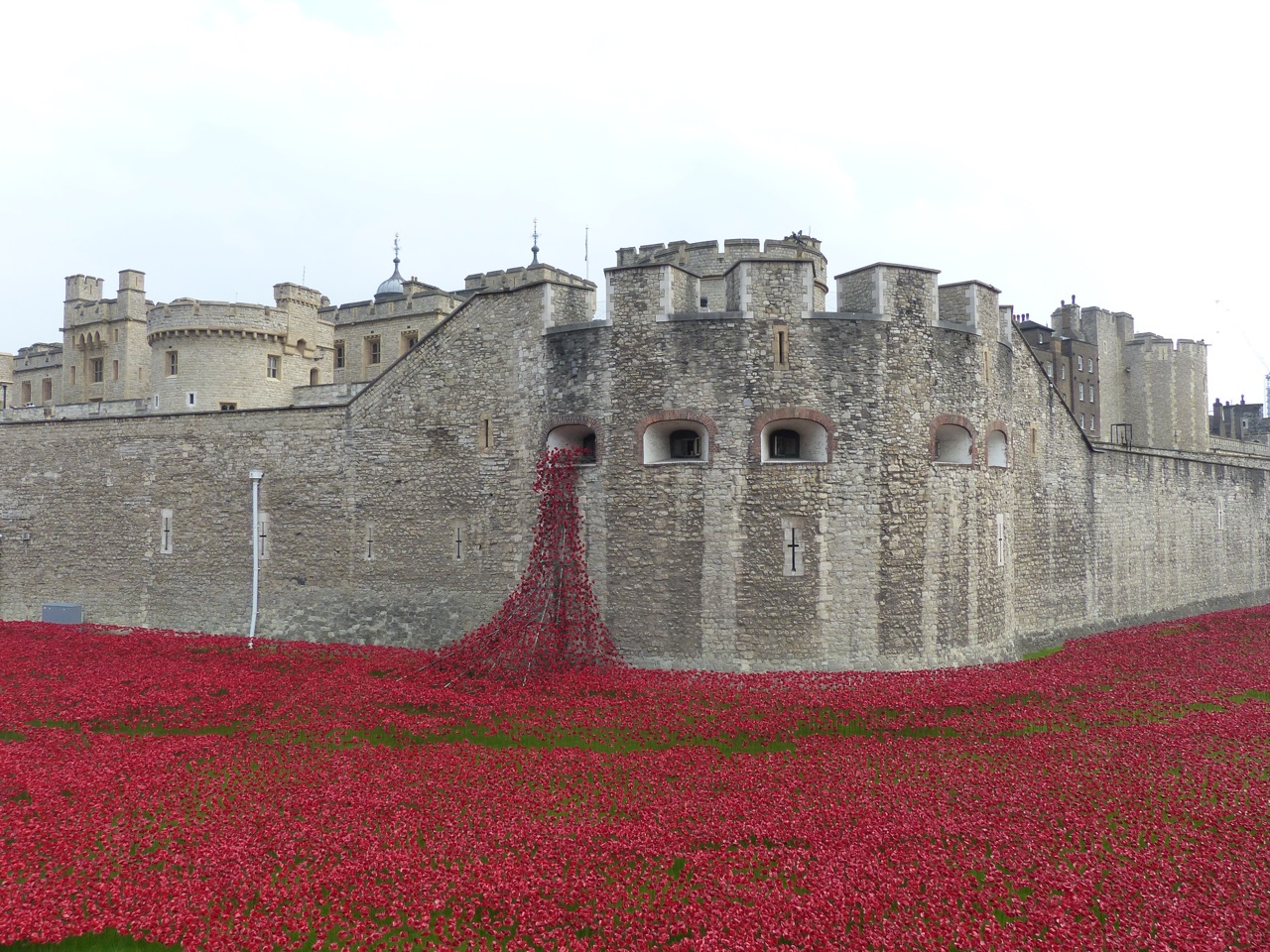While on holiday in England this past September, my partner Kelly and I visited a stunning art installation at the Tower of London.
“Blood Swept Lands and Seas of Red” by ceramic artist Paul Cummins and stage designer Tom Piper commemorates the 100th anniversary of the beginning of World War I. Every day since July 17, ceramic poppies representing each British and colonial military death in that war have been laid in the Tower’s moat. This will continue until November 11, when the moat will be full with 888,246 poppies.
It is breathtaking, almost beyond belief. Beautiful and absolutely brutal. And it represents the loss of just one part of one “side” in a war that eventually took 10 million military and seven million civilian lives and left another 20 million wounded.
I looked upon it with a strange kind of wonder. Almost 700 of those poppies represent members of the Royal Newfoundland Regiment, who on July 1, 1916 followed orders to leave their trenches at Beaumont Hamel and advance upon German lines. Within about 20 minutes, 670 of the 780 men in the regiment were dead, and of the survivors only about 65 were fit to report to roll call the next day. You cannot have grown up in Newfoundland as I did and not know or be deeply moved by that story, which so horribly captures the cruel cost of war. And here it was, laid out before me and multiplied more than 1300 times.
Looking at the poppies pouring out from one of the Tower windows to pool in the moat, another thought came to mind, albeit ironically: “Let justice roll down like waters, and righteousness like an everflowing stream.” As fortune would have it, this is one of the texts for this week, Remembrance (or Peace) Sunday.
Remembrance Day is complicated for me. As a historian, I studied war. In my job, I am connected to people around the world who are deeply affected by it and who face it on a daily basis; with them, I seek to create the conditions that render war obsolete. And my personal history goes beyond what I inherited as a Newfoundlander. I am the daughter of a decorated World War II veteran and career air force officer, the sister of a soldier whose job was to help “keep the peace” during the Cold War, and the aunt of a serving soldier whose specialty is defusing Improvised Explosive Devices.
And so I found myself searching the lectionary — proofing the texts, perhaps, for nuggets of wisdom. We’ve used scripture to justify war for centuries. What other truths — what hope — might we also find in our contested texts?
We might search for new or different meaning in the book of Joshua, which resounds with warnings to worship no other God than Yahweh.
“Now therefore revere the Lord, and serve the Lord in sincerity and in faithfulness; put away the gods that your ancestors served.”
Who might these other gods be? If our economic reading of the Bible can lead us to understand the market as a false idol, then why not militarism?
I’m struck as well by the language in Psalm 78, by the emphasis on marking the past — “…things that we have heard and known,” — and sharing it with our children and grandchildren as part of our responsibility to them. There is a grim determination in the text –“we will not hide them from their children” — but also the swift assurance that with such teachings future generations shall find hope and justice.
As a historian, I’ve been trained not to accept the fallacy that we can pull the solutions for our current problems from the past. Likewise, I don’t think we can — or should try to — pull panaceas from the Bible. What we can do, though, is analyze the past truthfully and look for hope in the foundational texts of our faith. And we might also search for Wisdom, who “hastens to make herself known to those who desire her.”
It’s only if we truly acknowledge the past and its brutality — or conversely, the success of non-military solutions — and find the determination to move beyond it that we can ever hope for a different future, one where justice rolls down like water.
Soon after Kelly and I visited the Tower installation, we went to the Imperial War Museum’s new interpretation of the war. Those expecting a triumphalist telling would best go elsewhere. The Museum’s display bore honest witness to the capriciousness, brutality, and horrific social impact of the “War to End All Wars.”
I left London acknowledging this war in more than an academic way; I left hating war with more than a Christian activist’s sense that it is morally wrong. I left remembering it in the visceral way that “Blood Swept Lands and Seas of Red” demands.
That’s why this week I will, as I do every year, place two pins on my jacket. One is a bright red poppy, and the other is a button from Mennonite Central Committee Canada (a member of KAIROS) that reads, “To remember is to work for peace.”
Sara Stratton is Member Relations and Campaigns Coordinator at KAIROS Canada.
Photo: “Blood Swept Lands and Seas of Red” at the Tower of London, September 6 2014. Photo by Sara Stratton.



